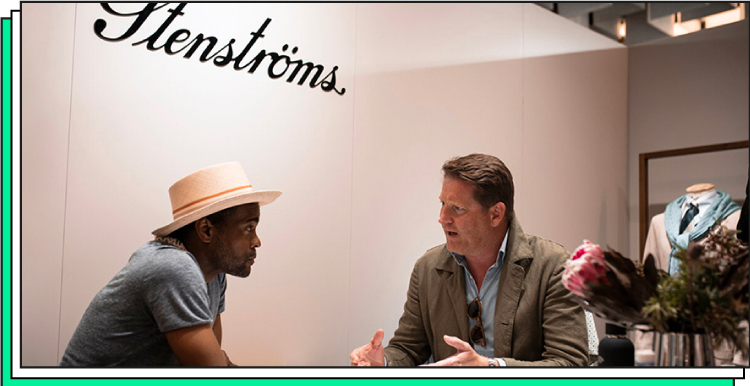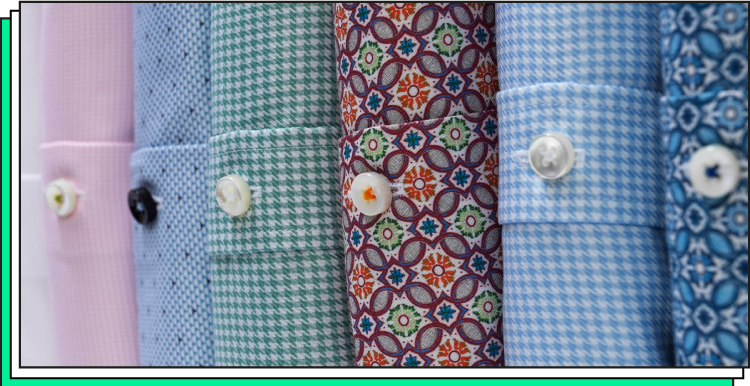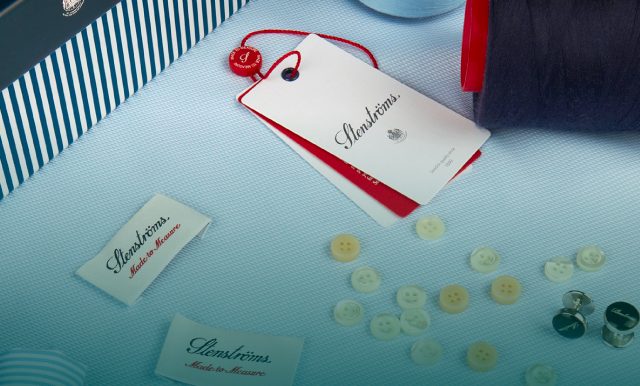Stenströms is one of the oldest and most trusted fashion brands in Scandinavia. Since its foundation in 1899, Stenströms has been known as an elite, high-quality brand. Kristina Alderbrink, the Head of Production, tells the story of the company’s digital transformation, the use of modern technology in business, and cooperation with Forbytes.
A Talk with Kristina Alderbrink
– Last year Stenströms celebrated its 120th anniversary, and the brand is well-known and respected. What is your secret to success?
– Probably, it’s consistency, and being good at what you are doing.
– How big is Stenströms now?
– We have around 60 people in our Swedish office and another 90 in our factory in Estonia. All of them are employed by Stenströms, but also we work with a network of retailers. We have around 30 partners here, up to 70 in the United States and 40 in Canada. We work with numerous European countries as fabric providers. Our fabrics are produced in the Czech Republic, Italy, Portugal, Switzerland, and Germany, some can also be from Spain. Every season we have approximately 400 new fabrics.
– The company started by producing shirts, but today it’s much more than that, isn’t it?
– Yes, we have expanded the product line during the last 10–12 years. For a long time, I think 80–90 years, our collections for ladies included just blouses. Now we have dresses, knitwear, scarves, and other accessories. Also, ladies have a little bit of outerwear, some coats and jackets. In the men’s department 12 years ago it used to be only the shirts, now it’s also knitwear, ties, blazers, and scarves. We have agreed that we work with clothes from the waist and up, with small exceptions. For example, in 2020 collections for ladies have knitted skirts and even knitted pants with the same type of knitting that we used in blazers.
– You also have a unique Made-to-Measure service. Can you talk a bit more about it?
– We make exclusive shirts for people who want to have their own special designs and clothing perfectly tailored to their measurements. Also, there are people who need special measurements. It can be people with disabilities, for example, people who lost their arms. We spend a lot of time in the pattern department making patterns for these orders. We want to give everyone something that looks really nice. Some of our clients want just small adjustments without big changes like other fabrics or buttons. Right now, we are doing around 300 Made-to-Measure shirts and our goal is to increase this number at least twice.

– You need to minimize the manual part of the production process for this, correct?
– Yes, now there are a lot of manual jobs. Retailers in the shops write their orders in paper form, scan and send them to our office in Helsingborg. Here we create the order, transfer the information into the business system, and send it to the factory in Estonia. The factory has to transform this information again into their work orders. It’s a long process that requires a lot of administration. So many things can go wrong because of typing errors and too many people involved. It was actually our big limitation.
– So, you decided to use modern technology in business. How did you expect to benefit from it?
– To have less administration, of course, and to be able to make more shirts. In our case, digitalization can not just reduce errors but also save time. Retailers need to have more time to take new orders. Otherwise, we would have to involve more people and spend more to increase the number of produced shirts. Instead of sitting and typing something as we previously did, digitalization will save time for making the patterns, for example.

– Before project development, you had a Discovery stage. Was it important for you and the end result?
– I think it was very important. When you are a programmer or a part of the client’s company, you can only see a small part of the job that you are involved in, not the entire process. But when you start a project you have different people involved. You need to see the whole picture, all processes, and which effect they have. The Discovery stage helped us see what is needed not only for retailers but for all business processes including the factory.
– Are you satisfied with the result of the discovery stage?
– Yes, I’m satisfied. Before starting a project, you need to understand clearly what you want to get and why. If you have never worked with shirts, it is quite difficult to understand all the production details. It wasn’t a big problem but we had a lot of discussions to solve it. And afterward, I can feel that some parts had not been understood. But I think it was like 5% from 100%, it is a very small part.

– What can you tell about project development? What were your expectations and were they satisfied?
– I think it was very good and very easy. The communication went very well. Of course, as I said previously, there were a few questions to discuss because the developers didn’t understand our production process. I think they can work very much on their own without having a person for 48 hours for communication. No, they worked on their own, and when they had questions, we gave answers, and then they worked again. So I think the Forbytes team worked very well, and we achieved what we aimed for.
– Have you already tested the tool that you obtained?
– We are preparing for that. We are doing double work by sending orders to the factory via the app and the business system at the same time. They compare and verify the data to make sure everything works. It’s a big challenge for us to unite all our processes in one app. If we have fabrics in the app we need to have them in the warehouse, for example. From the 1st of March, we will have 4 to 5 shops in Sweden that will start the testing process. We hope to have all systems working with the app from August 2020.
– How important is it to have modern technology in business?
– I think it’s more and more important today. Young people don’t want to work with pens and paper, computers and iPhones are their world. We hope that people will still come to shops to feel and try the products. But when everything is moving so fast we also can speed up by using modern technology in business. Being a little bit modern can help us win. We definitely won’t stop with the Made-to-Measure application, we have different ideas.
– What would you like to try?
– For example, to give clients the ability to design their own shirts while sitting at home. There are also limits to using technologies. Recently I heard that the Swedish textile university has invited some kind of scanner. You scan your body and get the perfect fit of your pants. That is good, but using this kind of technology, you have to make sure that every shop has a scanner. Maybe it would be interesting in the long term when the scanner is cheaper, but right now its usage is unreasonable.

– What about technologies like AI for analyzing business data, or virtual reality?
– In the future yes, definitely. We are going step by step in implementing modern technology in our business. Currently, when choosing a shirt you can see only a piece of fabric. The next step would be to see what the shirt will look like with the chosen fabric and buttons. Then, of course, put it on yourself. There are technologies that can let you do this, like with VR glasses you can try things on.
– It’s interesting to see that a company with such a huge history is open to experiments and new technologies.
– I think you have to follow what comes along. You can say that you don’t want to be part of it, but you have to follow the developments in this area. Otherwise, I think that everyone else will go forward and leave you behind. Your business will drop.
– Would you recommend our company as a reliable software developer?
– Yes, I surely would. You were so professional in the Discovery stage and in everything that followed. It was easy to communicate even if we were far away from each other. Everything was good.
Find out more about Stenströms’ digital transformation strategy and business automation software.

Our Engineers
Can Help
Are you ready to discover all benefits of running a business in the digital era?

Our Engineers
Can Help
Are you ready to discover all benefits of running a business in the digital era?







